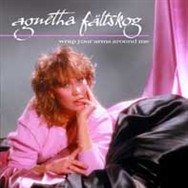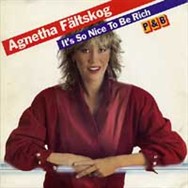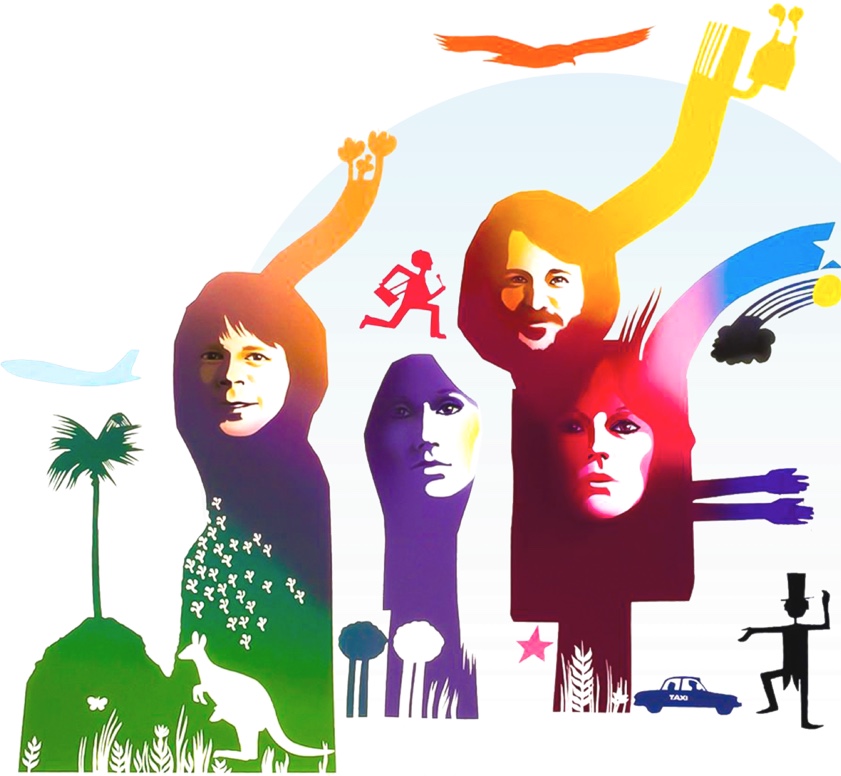In Focus: The Agnetha Fältskog Solo Albums
The world will always recognise Agnetha Fältskog primarily for her contributions as one of two amazing lead singers in ABBA. But her recording career started in 1967, and despite 17 years when she made no recordings at all, her solo albums actually out-number ABBA’s studio albums.
She was so in love
 Agnetha Fältskog became a recording artist in 1967, when she was only 17 years old. A prolific songwriter for many years even at that tender age, her début single featured one of her own songs, ‘Jag var så kär’ (“I Was So In Love”). The single shot to number one on the Swedish sales chart in early 1968, kicking off Agnetha’s recording career with a bang. Four years later, when ABBA recorded their first single in the spring of 1972, Agnetha had four albums and a slew of hit singles to her credit, all of them released on the Cupol label; for the first few years of ABBA’s career, Agnetha would remain signed to that label. Her fifth album – Elva kvinnor i ett hus (“Eleven Women In One House”), released in 1975 – was the only of her albums to consist only of tunes she had written herself (except for her Swedish-language version of ABBA’s ‘SOS’), and seemed to usher in a new phase in her career: the female singer/songwriter, firmly in control of her recorded output. However, by the time of the album’s release ABBA had exploded on the international scene, so instead Elva kvinnor i ett hus constituted Agnetha’s farewell to the Cupol label. After that she became a full-time Polar Music recording artist and the remainder of the decade was almost exclusively devoted to her work with ABBA.
Agnetha Fältskog became a recording artist in 1967, when she was only 17 years old. A prolific songwriter for many years even at that tender age, her début single featured one of her own songs, ‘Jag var så kär’ (“I Was So In Love”). The single shot to number one on the Swedish sales chart in early 1968, kicking off Agnetha’s recording career with a bang. Four years later, when ABBA recorded their first single in the spring of 1972, Agnetha had four albums and a slew of hit singles to her credit, all of them released on the Cupol label; for the first few years of ABBA’s career, Agnetha would remain signed to that label. Her fifth album – Elva kvinnor i ett hus (“Eleven Women In One House”), released in 1975 – was the only of her albums to consist only of tunes she had written herself (except for her Swedish-language version of ABBA’s ‘SOS’), and seemed to usher in a new phase in her career: the female singer/songwriter, firmly in control of her recorded output. However, by the time of the album’s release ABBA had exploded on the international scene, so instead Elva kvinnor i ett hus constituted Agnetha’s farewell to the Cupol label. After that she became a full-time Polar Music recording artist and the remainder of the decade was almost exclusively devoted to her work with ABBA.
 Her first release as a solo artist on the Polar label came towards the end of the ABBA era, in October 1981, and the album in question was no straightforward pop creation either. Agnetha had wanted to record something with her and Björn’s daughter, Linda, for a long time. In November 1980, mother and child finally entered Polar Music Studio in Stockholm, Sweden to record a collection of Swedish-language Christmas songs. Linda was seven years old at the time. The original intention was that the album should be rush-released in time for Christmas in 1980, but it was soon realised that the deadline wouldn’t be met. Therefore, Nu tändas tusen juleljus (“Now A Thousand Christmas Candles Are Being Lit”), as the album was entitled, wasn’t issued until October 1981. Upon release it reached number 6 on the Swedish album chart and has remained a consistent seller each Christmas since then.
Her first release as a solo artist on the Polar label came towards the end of the ABBA era, in October 1981, and the album in question was no straightforward pop creation either. Agnetha had wanted to record something with her and Björn’s daughter, Linda, for a long time. In November 1980, mother and child finally entered Polar Music Studio in Stockholm, Sweden to record a collection of Swedish-language Christmas songs. Linda was seven years old at the time. The original intention was that the album should be rush-released in time for Christmas in 1980, but it was soon realised that the deadline wouldn’t be met. Therefore, Nu tändas tusen juleljus (“Now A Thousand Christmas Candles Are Being Lit”), as the album was entitled, wasn’t issued until October 1981. Upon release it reached number 6 on the Swedish album chart and has remained a consistent seller each Christmas since then.
Wrap your arms around her

Her choice of producer was Mike Chapman, who’d enjoyed a highly successful career during the 1970s as songwriter and producer for the likes of The Sweet, Mud, Smokie and Suzi Quatro, and producer for acts such as Blondie and The Knack. After Agnetha had trawled through hundreds of demo tracks in late 1982, she and Chapman met up at Polar Music Studio in January 1983 to record the best of those songs. She also asked singer Tomas Ledin – a very popular artist in Sweden, who had been afforded a solo spot on ABBA’s 1979 tour – to write something for her album, the resulting track being the reggae-flavoured ‘Take Good Care Of Your Children’. Mike Chapman collaborated with Holly Knight on what ultimately became the title track of the album, the seductive ‘Wrap Your Arms Around Me’. However, the most popular song to emerge from the recording sessions was the jubilant, calypso-styled ‘The Heat Is On’. It was the first single from the album and reached number one on the Swedish chart. The track was indicative of Agnetha’s overall intention for the album. “We wanted good songs with strong melodies, a positive spirit. Not just tragic ballads about someone having left you, or that life is difficult,” she explained in an interview.

Stewarded by Stewart
The period 1982–1986 was a highly prolific period for Agnetha as a recording artist, mirrored by the slew of bonus tracks included on the 2005 CD version of Wrap Your Arms Around Me. For example, her 1982 duet with Tomas Ledin on ‘Never Again’ was also recorded in a Spanish version, ‘Ya Nunca Más’, while the songs on her 1983 hit single ‘It’s So Nice To Be Rich’/’P&B’ – released shortly after Wrap Your Arms Around Me – were taken from the Swedish movie P&B.

The way she is

In 1987, Agnetha signed with Warner Music and released two more solo albums, the first of which was a children’s album with her son Christian, entitled Kom följ med i vår karusell (“Come Join Us In Our Carousel”). That was followed by the international pop LP I Stand Alone, recorded in Los Angeles and produced by former Chicago member Peter Cetera, entering the Swedish charts at number one. But after that, Agnetha’s motivation at remaining in the music business sank drastically. She had been a recording artist for 20 years and had barely stopped to take a stock of her life after ABBA’s final recordings. As she admitted recently, “I was so tired … and just wanted to be calm and be with my children.” It would be 17 years before she released another album. My Colouring Book, issued in 2004, featured a selection of covers of favourite songs, most of them from the 1960s. However, all soon went quiet again and most people, including Agnetha herself, concluded that this was probably her final album.
Back on our radios

Whether this success will be followed by further albums remains to be seen. But at the very least one more chapter has been written in the story of Agnetha’s solo career, enabling us to yet again enjoy her voice in a context quite different from ABBA: Agnetha Fältskog on her own.
